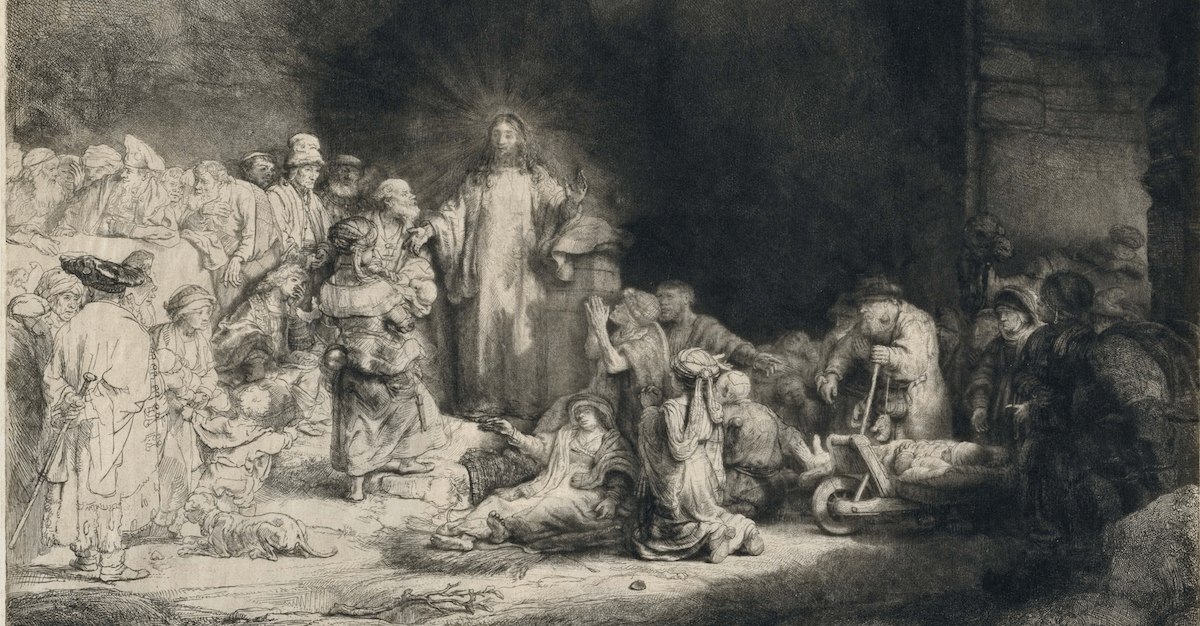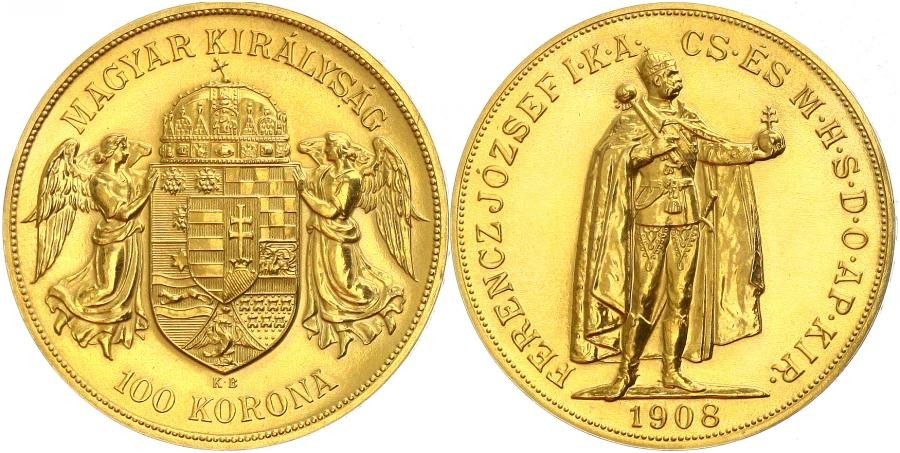Guest Post by Simon Black

In the year 1649 after nearly a decade of painstaking work, the legendary Dutch artist Rembrandt van Rijn put the finishing touches on one of his masterpieces: Christ Healing the Sick.
The piece is considered a technical and artistic marvel, proving without doubt that Rembrandt’s skills were truly ahead of his time.
So it’s no surprise that he sold the piece for a record-setting 100 Dutch guilders… an incomprehensible amount of money to pay for art at the time.
A lot of people probably thought the buyer was crazy for paying such a high price.
But the masterpiece was passed down through the generations for more than 200 years. And when it came up for sale again in 1867, it was purchased for the equivalent of nearly 12,000 Dutch guilders… more than 100x the original price paid in 1649.
Rembrandt paintings don’t change hands too often these days; in fact there are only three of his works that are still privately owned.
16 million euros would have been the equivalent of more than 35 million Dutch guilders (based on the final exchange rate in 1999 when the guilder was replaced by the euro).
You might be thinking– “That seems like a phenomenal return on investment– from 100 to 12,000 to 35+ million.”
But the return on investment works out to be just 3.5% per year, compounded annually over the past 371 years.
There are a few key lessons from this–
First, never underestimate the power of compound interest. Even small amounts compounded over long periods of time can really add up.
Second: 3.5% is actually a great return given the length of time involved. It means it held its value, and then some.
This probably seems counterintuitive since we’re accustomed to higher investment returns; big “blue chip” companies like Disney and Coca Cola, for example, generate average returns for their investors that are much greater.
But even the biggest, most powerful companies typically don’t last 371 years. They go out of business. They get acquired. They fade into obscurity.
In Rembrandt’s time in the 1600s, the most powerful company in the world was the Dutch East India Company; it was the first-ever publicly traded corporation, and it set records for its massive profitability.
But by 1800 it was out of business.
In the early 1900s, Sears was the largest and most prominent retailer in the world. But today it’s bankrupt and struggling to keep its doors open.
In the 1990s, Yahoo dominated the Internet. Yahoo executives were so certain of the company’s success that in 1998 they flat out rejected the opportunity to buy a little startup called Google for $1 million.
Yahoo reached a peak valuation of $125 billion in 2000. But fifteen years later, Verizon bought Yahoo’s assets for less than $4.5 billion.
Don’t get me wrong– I’m not suggesting that businesses are bad investments. In fact, I’ve long believed that the best investment is a great business.
A great business is a ‘real asset’, so its value rises during inflationary times. During times of deflation, it produces vital cash. And during times of crisis, it scoops up the market share of its failed competitors and emerges stronger than ever.
Yet most businesses are not forever assets, as the East India Company, Sears, Yahoo, and so many other examples show.
Great businesses require great management. But at some point in the future, even the most successful companies may hand the reins over to a new generation of incompetent executives.
So even Google, Coke, Facebook, Disney, Amazon, and the next great startup may someday fade, as hard as that is to imagine.
A forever asset is something like a Rembrandt. It doesn’t depend on a team of executives to manage it, yet it can still have value hundreds of years from now.
The downside of a Rembrandt is that there’s still some physical risk.
We’re seeing Bolshevik revolutionaries running around now defacing property, burning down buildings, and targeting anyone with wealth. I wonder how long a Rembrandt would last under their watch.
Even under normal circumstances, a painting must be stored in the right environment– not too much moisture, not too much sunlight.
Gold, on the other hand, has none of those risks.
It’s practically indestructible. You can drop it and it won’t break. It doesn’t rust. Melt it down and it is still valuable.
It’s small enough to store securely, or transport if need be.
And it REALLY holds its value.
The amount of gold it took to buy a high-end house 1,100 years ago in the Islamic Kingdom of Cordoba equals about the same price of a high-end home today.
4,000 years before that, merchants in the fertile crescent, at the very birth of civilization, were trading gold in exchange for goods.
Obviously most people don’t consider too many generations into the future when making investment decisions.
Most of us invest for the here and now… so it’s nice that gold has a lot of upside investment potential today.
As I’ve written before, the more money that central bankers print in their Covid bailouts, the more valuable gold becomes.
And I just wrote earlier this week that silver has already become one of the best performing assets in the world right now, plus gold has also been quite strong.
But aside from having substantial present-day potential, gold is also a forever asset that has already proven its worth over 5,000 years.
Gold has outlasted every company, every piece of art, every government bond.
And when you look at the universe of investment options, there just aren’t a lot of things you can say that about.
It is my sincere desire to provide readers of this site with the best unbiased information available, and a forum where it can be discussed openly, as our Founders intended. But it is not easy nor inexpensive to do so, especially when those who wish to prevent us from making the truth known, attack us without mercy on all fronts on a daily basis. So each time you visit the site, I would ask that you consider the value that you receive and have received from The Burning Platform and the community of which you are a vital part. I can't do it all alone, and I need your help and support to keep it alive. Please consider contributing an amount commensurate to the value that you receive from this site and community, or even by becoming a sustaining supporter through periodic contributions. [Burning Platform LLC - PO Box 1520 Kulpsville, PA 19443] or Paypal
-----------------------------------------------------
To donate via Stripe, click here.
-----------------------------------------------------
Use promo code ILMF2, and save up to 66% on all MyPillow purchases. (The Burning Platform benefits when you use this promo code.)






I am thinking that two months after the presidential election Brexit happens. Both have been fought bitterly for 4 years already. A financial event would serve one side in both cases. The table has certainly been set for that to happen.
Being a gold bug has never felt better.
I’m not an art enthusiast but in college I took an Art, Music and Literature class. Rembrandt stuck in my mind all these years as something I would like to own for the sake of it’s beauty and no other reason.
Actually I took an Art History class on a lark while in college. The class I took covered this period extensively and I learned a whole lot.
Had the pleasure of seeing this painting (The Night Watch) of his in person. Its about 10 feet tall I think. An amazing artist indeed. Personally I have always wanted to own a Dali, but never within financial reach.

Yes, imo, Rembrandt is the GOAT.
Rembrandt was incredible….
Although Michelangelo used to sneak into the “morgues” of the day to check out muscles and such below the skin, etc. as a means to enhance his understanding of anatomy. Certainly paid off in his sculptures. The image reminded me of that.
Gold also outlasts everything because as an element, it simply cannot be transformed, does not rust, etc. Its magical.
The last coin I purchased (just on a lark because of my Hungarian heritage and I had been keeping an eye on it), I purchased during gold’s brief drop at the beginning of the plannedemic. Wasn’t really paying any more attention to the coin other than it was now a good deal, was a full ounce, and was from 1908, when the Austo-Hungarian Empire still existed. Turns out it was even more fortuitous as its denomination is 100 Korona.

I traded off a bunch of sports memorabilia and some silver rounds last September when the bank overnight rates went haywire. Autographed stuff like Dom Dimaggio and Negro League players with Fleer base sets. The sports shop cut me a check, I cashed it, and went right to the coin shop a half-mile up the street with a pocket full of paper. The good stuff in my sports hoard has yet to be sold.
Bought two $5 gold Indians, a $2.50 Indian, a graded first year 1878S Morgan, and a 1935 Peace dollar. Later on I got more US silver … half dollars and a Bicentennial Mint proof set, dirt cheap.
I like looking at and owning the older US coins because they reflect past culture and historical values. The financial angle is secondary.
I had my eye on a gold coin with Julius Caesar on it once. Just way too out of my price range, but indeed, the history, who might have held it once, etc. All things that make coins a wonderful thing.
Nice looking coin, Lib.